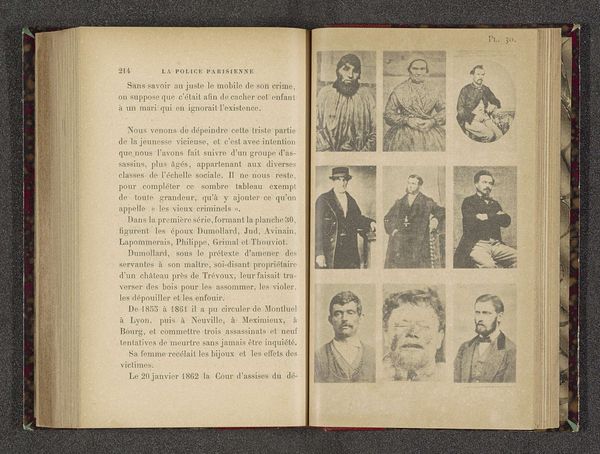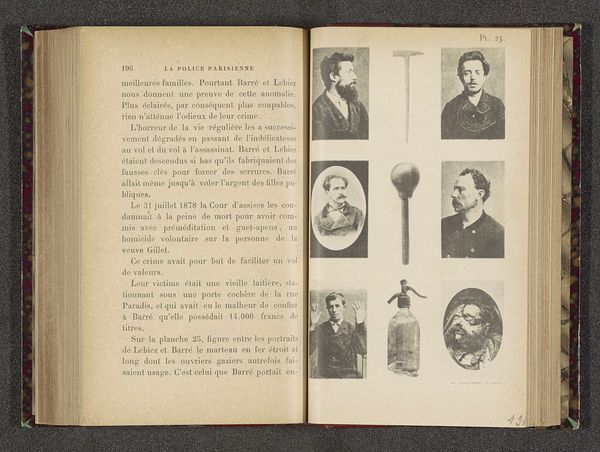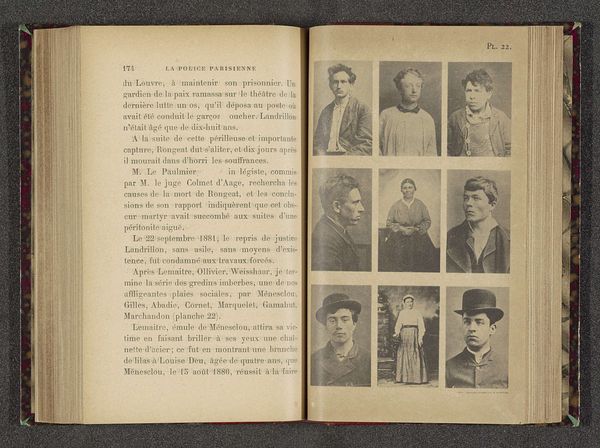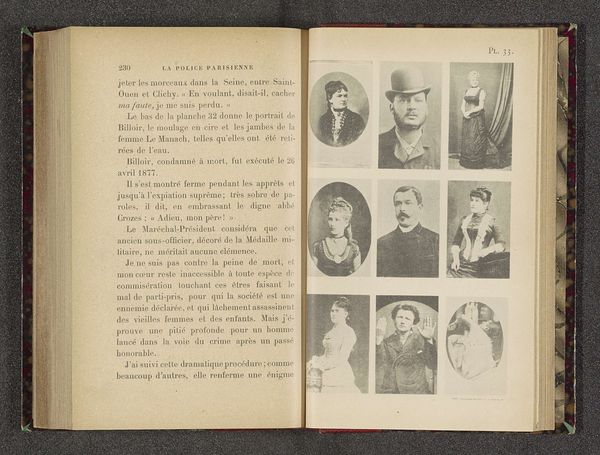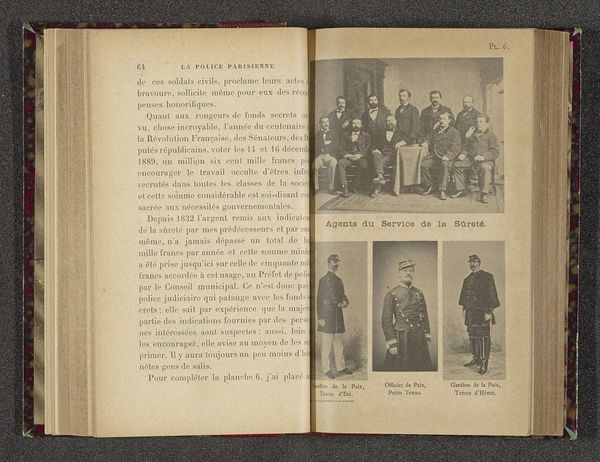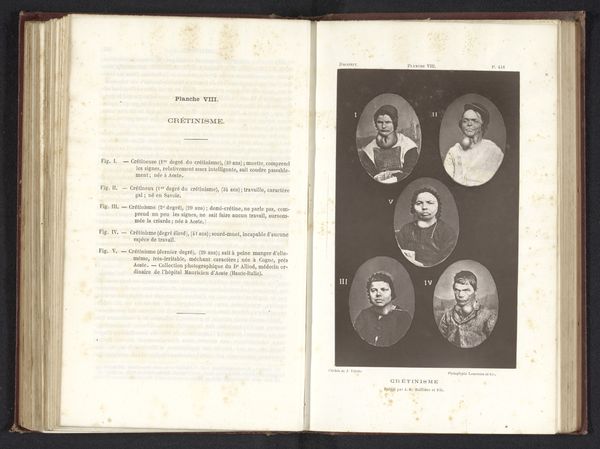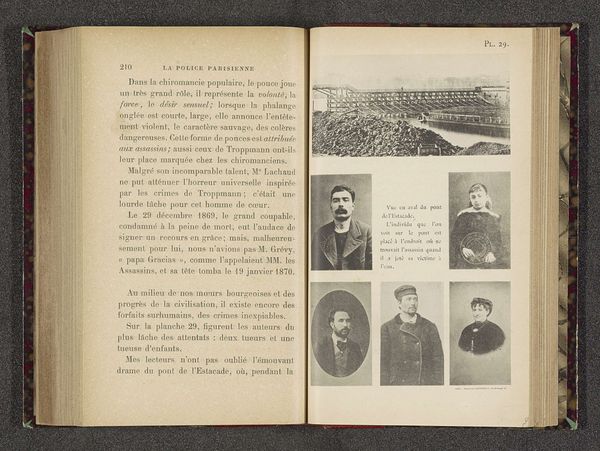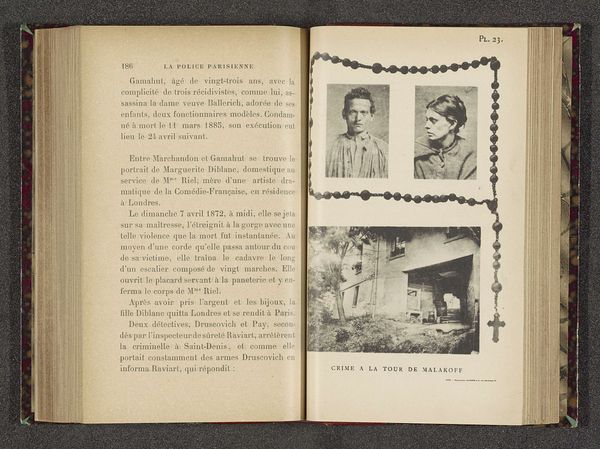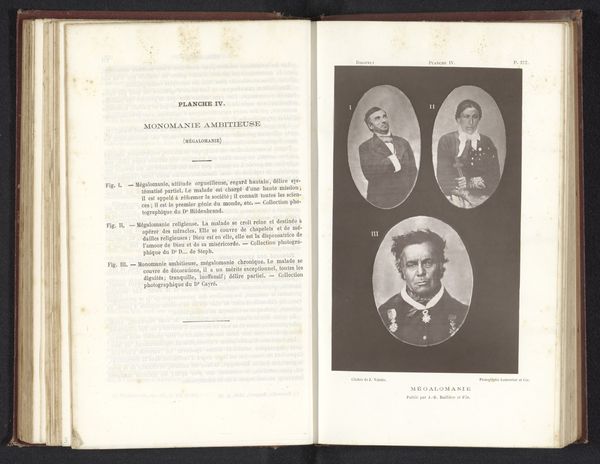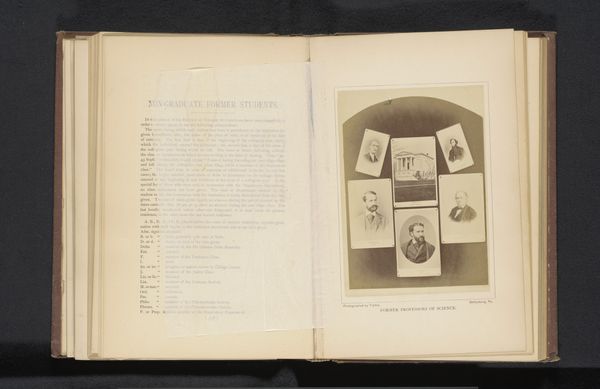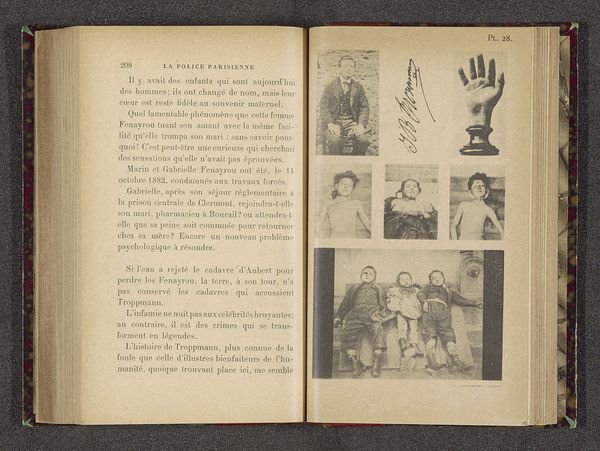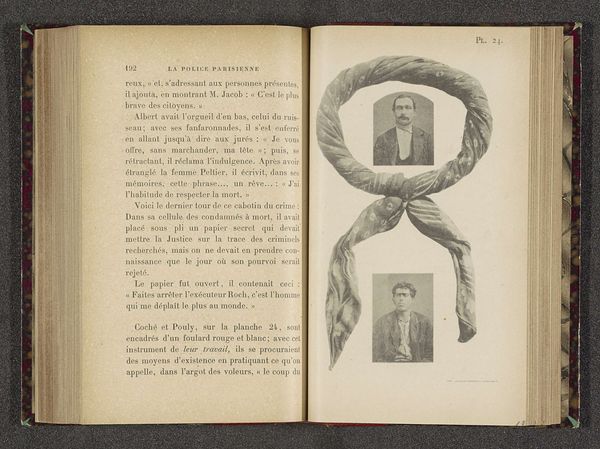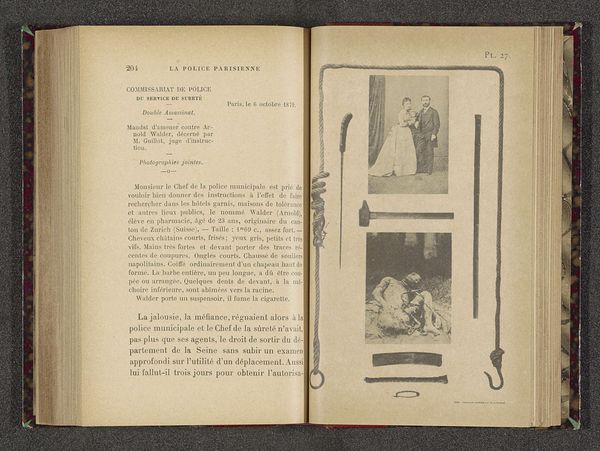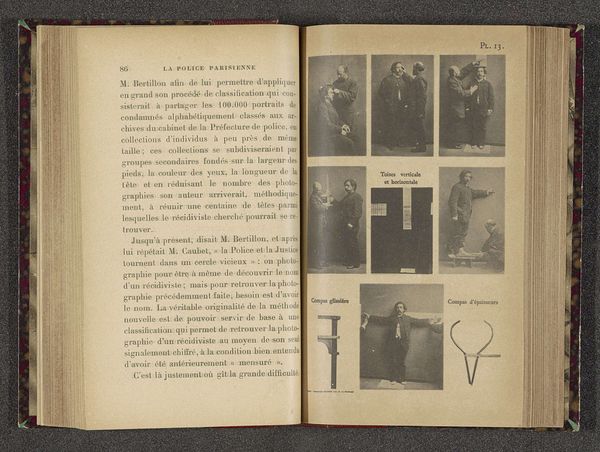
drawing, print, paper, photography, ink
#
drawing
# print
#
paper
#
photography
#
ink
#
coloured pencil
#
genre-painting
Dimensions: height 174 mm, width 105 mm
Copyright: Rijks Museum: Open Domain
Curator: Looking at this open book, a pre-1890 work entitled "Aan een moord gerelateerde voorstellingen," which roughly translates to "Representations Related to a Murder," I immediately notice the unsettling contrast between text and image. It seems almost journalistic, mixing photographic and sketched elements with text that clearly narrates details of criminal cases. Editor: My immediate impression is one of morbid fascination. The stark monochrome imagery, combined with what appears to be journalistic text, creates a sense of voyeuristic dread. I wonder what purpose this juxtaposition served at the time. The artist is anonymous. Curator: Precisely. These visual and textual elements present, in the same layout, both objective portrayals of individuals, almost like mugshots or police evidence, along with sketches that are more artistic impressions or diagrams perhaps. It challenges our understanding of truth and representation, a constant negotiation visible in many modern magazines, like forensic or crime case magazines. What does this proximity do, historically and socially? Editor: The very layout begs questions about power, surveillance, and representation. The anonymous artist is assembling elements of both observation and imagination. The arrangement creates an "us versus them" mentality, positioning the viewer as a safe, distanced observer of this dangerous underclass. The use of photography, ink, and colored pencil highlights different layers of construction—a seemingly "objective" photograph alongside potentially biased sketches and text. It brings me to consider contemporary issues related to identity and prejudice, even stereotypes. Curator: Right. Considering these elements—photographs of supposed criminals alongside what look like sketches of murder weapons or scenes, interspersed with descriptive text—it paints a particular picture. How does this selection and organization affect viewers' perceptions, then and now? The composition almost suggests a hierarchy of information, creating a subjective understanding from supposedly objective parts, don’t you think? Editor: I do. It underscores how societal narratives about crime and morality are shaped through a careful layering of media and representation. Examining "Aan een moord gerelateerde voorstellingen" forces us to reflect on the enduring power dynamics present in art, journalism, and criminal justice systems alike. Curator: It makes you ponder the function of crime depictions in any time period really, this makes you reconsider current productions and representations, or true crime narratives in today's visual culture as a social observer and an engaged actor with contemporary political theory. Editor: Indeed. Reflecting on how this book blends documentary-style imagery with narrative interpretation helps illuminate the complicated relationships between seeing, knowing, and believing.
Comments
No comments
Be the first to comment and join the conversation on the ultimate creative platform.
